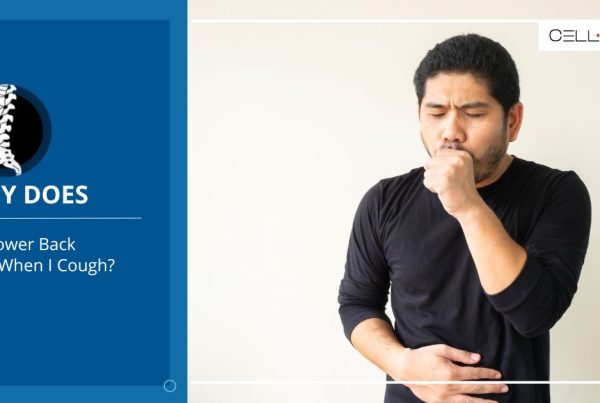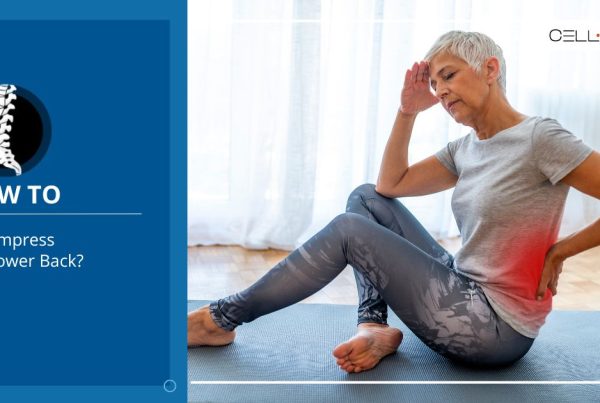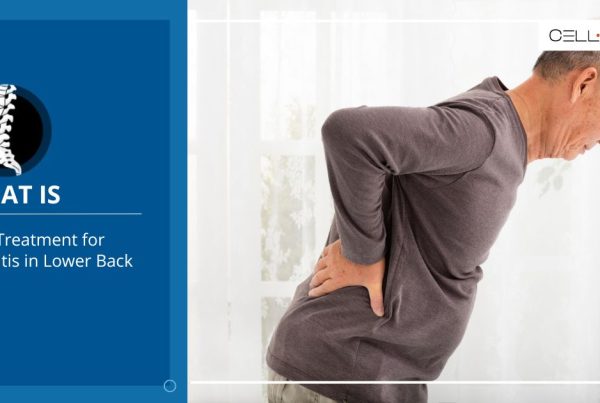Published on: November 13, 2024 | Updated on: January 18, 2025
Cracking joints such as knuckles, fingers, and toes create audible popping sounds that many people relish. The habitual cracking of joints produces oxytocin and neurotensin.
These hormones trigger a pain-killing pathway, due to which many people opt for spine manipulation to relieve lower back pain.
The lower back has some major structures, including the spine, associated vertebrae, and joints. Cracking the lower back relieves the sense of stiffness, releases endorphins, and reduces muscle tightness.
If you know how to crack your lower back properly, you can relieve the pain and tightness in the back muscles. Let’s learn how to crack your lower back.
What Happens When You Crack Your Lower Back?
The spine is called a vertebral column, as it is made up of 33 vertebrae. These bony structures have a facet joint.
Cracking your back through spine manipulation techniques stretches the facet joint capsules around the outer side of the vertebrae.
The fluids between the joint capsule become gaseous due to stretching. When these gasses are released, they make a popping sound.
How to Crack Your Lower Back Properly?
Cracking your lower back reduces pain and muscular stiffness. It also aligns the spine with the pelvis.
However, when you think about cracking your lower back, you may fear dislocating a joint or breaking a bone. Here are some safe ways to crack your lower back the right way.
Seated Techniques
The lower back, being the center of balance, experiences less gravitational pressure when you’re sitting, which makes seated techniques safer and easier for spine manipulation. You can sit on a chair or use the ground.
Here’s how to crack your lower back using a chair.
First, sit on a chair without an armrest to keep your hands behind your back and interlock them. Position your hands over the painful lower back area.
Slowly press your hands into the back, pushing your body forward. This will create a popping sound, cracking the lower back.
Alternatively, you can twist your body in the chair while grabbing the back of the seat. Stretch out until you feel muscular relief. Then, return to the starting position before repeating on the other side.
You can also crack your lower back while seated on the ground.
Sit on the floor with both legs extended. Then, bend up one knee and keep the foot flat on the ground. Rotate the torso towards the bent knee.
Face your opposite shoulder and try to overlook it for a deeper stretch. Return to the starting position before repeating on the other side.
Bridge Stretch
The bridge stretch is a spine manipulation exercise that cracks the lower back. You can do it yourself to safely crack your back. Simply lie down on the floor and stretch the arms sideways in an airplane pose.
Slide the feet close to your pelvis, keeping the knees bent. Lift the pelvis from the ground so your shoulders and knees form a straight line. Hold the stretch for a few minutes before repeating a few times until you hear the popping sound.
Kneeling Back Extensions
Kneeling back extensions are another excellent way of cracking your lower back. If you don’t have a neck injury and you can kneel without pain, this is a safe method.
Kneel on the floor and interlock your hands behind your neck. Bend forward to extend the muscles in your spine, and hold the stretch for ten seconds before returning to the starting position.
You can also try this exercise by keeping a ball at the front and bending at the hips over the ball.
Cat Stretch
Cat stretch releases muscle tension in the lower back. For cat stretch, get down on the floor with all fours. Place your hands directly below the shoulders and the knees below the hips in a cat pose.
Slowly arch your back toward the ceiling and push your stomach back downwards. Tuck your head between the shoulders and hold position for 30 seconds.
Spinal Twist
Spinal twists crack your lower back, relieving discomfort and pain. You can lie down on your back on the floor. Keep your hands straight in an airplane pose.
Bend one leg at your knee and rotate it towards the opposite side of your body. Aim to touch the thigh with the opposite hand. Hold the position for ten seconds.
Repeating this a few times will relieve the muscle tightness in the back and crack your lower back.
How Risky Is It to Crack Your Lower Back?
Natural back cracking is safe as it happens due to the gas escaping the fluid in the joint capsule. While natural lower back cracking is considered safe, intentional cracking presents a few concerns.
It is risky to crack your lower back if you do it improperly because forceful cracking has repercussions such as a pinched nerve. If the pinched nerve gets compressed, it sends a sharp radiating pain to the rest of the back.
A compressed nerve also makes lower back movements difficult by causing stiffness. You may not be able to twist or bend properly due to nerve compression.
If you crack your lower back frequently, the ligaments in the back joints become stretched. This condition is called ligament laxity, which causes perpetual instability, putting you at risk for osteoarthritis.
The lower back, also called the lumbar region, has numerous important structures such as blood vessels, tendons, and muscles.
Improper lower back cracking can strain any of the back muscles or tear the tendons. This causes acute inflammation and stiffness, which limits movement. Therefore, it’s important to know how to crack your lower back safely.
If you want to do so to relieve discomfort, it’s best to seek help from a chiropractor.
Side Effects of Cracking Lower Back
Although cracking your lower back is mostly considered safe, spinal manipulation has a few adverse effects. Here are the potential side effects of improperly cracking your back.
- Soreness
- Discomfort
- Worsened backache
- Pinched nerve
- Torn muscles
- Ligament laxity
- Muscle strains and spasms
Wrap Up
Knowing how to crack your lower back safely can help relieve muscle stiffness and reduce mild pain.
However, you must only crack your lower back gently and slowly through spine manipulation exercises to reduce the risk of potential side effects.
While cracking your lower back is a low-risk activity for releasing muscle tension and stiffness, constant pressure in the back requires medical care. You should consult a doctor to relieve lower back pain instead of trying self-spine manipulation techniques for chronic pain.
Sources
Footnotes
- Lohman EB, Pacheco GR, Gharibvand L, Daher N, Devore K, Bains G, et al. The immediate effects of cervical spine manipulation on pain and biochemical markers in females with acute non-specific mechanical neck pain: a randomized clinical trial. J Man Manip Ther. 2019;27(4):186–96.
- H. T. Vernon, M. S. Dhami, T. P. Howley, R. Annett. Spinal manipulation and beta-endorphin: a controlled study of the effect of a spinal manipulation on plasma beta-endorphin levels in normal males. J Manipulative Physiol Ther. 1986 Jun;9(2):115-23.
- De Zoete A, Rubinstein SM, de Boer MR, Ostelo R, Underwood M, Hayden JA, et al. The effect of spinal manipulative therapy on pain relief and function in patients with chronic low back pain: an individual participant data meta-analysis. Physiotherapy. 2021;112:121–34.
- Blalock D, Miller A, Tilley M, Wang J. Joint instability and osteoarthritis. Clin Med Insights Arthritis Musculoskelet Disord. 2015;8:15–23.
- Nielsen SM, Tarp S, Christensen R, Bliddal H, Klokker L, Henriksen M. The risk associated with spinal manipulation: an overview of reviews. Syst Rev. 2017;6:64.
References
- Anatomy, Back, Vertebral Column. StatPearls. Accessed 09/11/2024.
- Spinal Manipulation: What You Need To Know. National Center for Complementary and Integrative Health. Accessed 09/11/2024.
- Chapter 13: Equilibrium and Human Movement. Dutton M. Orthopaedics for the Physical Therapist Assistant. McGraw-Hill Education. Accessed 09/11/2024.
- What Is Ligamentous Laxity? WebMD. Accessed 09/11/2024.
CELLAXYS does not offer Stem Cell Therapy as a cure for any medical condition. No statements or treatments presented by Cellaxys have been evaluated or approved by the Food and Drug Administration (FDA). This site contains no medical advice. All statements and opinions are provided for educational and informational purposes only.
Dr Pejman Bady
Author
Dr. Pejman Bady began his career over 20 years ago in Family/Emergency Medicine, working in fast-paced emergency departments in Nevada and Kansas. He has served the people of Las Vegas as a physician for over two decades. Throughout this time, he has been met with much acclaim and is now the head of Emergency Medical Services in Nye County, Nevada. More about the doctor on this page.
Dr Pouya Mohajer
Contributor
Pouya Mohajer, M.D. is the Director of Spine and Interventional Medicine for CELLAXYS: Age, Regenerative, and Interventional Medicine Centers. He has over 20 years of experience in pain management, perioperative medicine, and anesthesiology. Dr. Mohajer founded and is the Medical Director of Southern Nevada Pain Specialists and PRIMMED Clinics. He has dedicated his career to surgical innovation and scientific advancement. More about the doctor on this page.









